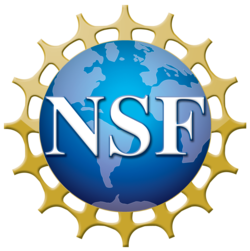The purpose of the NSF Graduate Research Fellowship Program (GRFP) is to help ensure the quality, vitality, and strength of the scientific and engineering workforce of the United States. Since 1952, the program recognizes and supports outstanding graduate students who are pursuing full-time research-based master’s and doctoral degrees in science, technology, engineering, and mathematics (STEM) fields, including STEM education. NSF GRFP was established to recruit and support individuals who demonstrate the potential to make significant contributions in STEM, including STEM education. NSF encourages applications from the full spectrum of talent that the U.S. has to offer.
STATUS: As of October 15, 2025, the NSF is closed due to the government shutdown. However, the solicitation is live, the website continues to be updated, and the previously-announced deadlines (see below) have not been changed.
Deadlines
For the Fall 2025 semester, here are the deadlines for the NSF GRFP:
- November 7: All reference letters due by 5:00pm Eastern Time
- November 10: Life Sciences
- November 12: Computer and Information Science and Engineering; Materials Research; Psychology; Social, Behavioral and Economic Sciences; STEM Education and Learning
- November 13: Engineering
- November 14: Chemistry; Geosciences; Mathematical Sciences; Physics and Astronomy
Resources
Here are some resources that you may find useful when working on your NSF GRFP application:
- NSF’s “Information for Applicants” website (which includes detailed templates for each response)
- Alex Lang NSF Page (which includes a database of proposals with reviews)
- NSF’s 2025 Application Overview Webinar (recorded in early October 2025)
Questions
The grfp@nsf.gov mailbox is not being monitored during the government shutdown, so there is no one at NSF to answer questions specific to your application, your eligibility, etc. In lieu of that resource, see the list below for responses to frequently asked questions about the NSF GRFP application process:
- Frequently Asked Questions from www.nsfgrfp.org. This is the only FAQ resource that has been updated by staff at the NSF in recent months. It should serve as the definitive source for prospective applicants.
- ONSF discourages students from relying on the FAQ page at research.gov. It was last updated in Sept. 2023, and several of the responses appear to be out-of-date, including questions about transcripts.
- In 2025, the NSF is (for reasons no one really understands) requiring students to upload official transcripts only.
- Click here for instructions on how to request a copy of your official transcript.
- The transcript you receive from the Parchment service will be permission-restricted. You’ll need to reprint it (or save another copy) and remove all permission restrictions before uploading your transcript. Otherwise, the file will not upload successfully.
- Note that when you print a copy of an official transcript, it generates a red “Copy of Transcript” watermark on your transcript. Fellowships advisors around the country are working on the assumption that this will not be a problem since the NSF is requiring official transcripts but did not create a mechanism for students to have their official transcripts sent directly to the NSF. In other words, every transcript they receive will be a “copy.”
- That said, if the red “Copy of Transcript” watermark really bothers you, there’s nothing keeping you from opening the file, printing it to PDF, saving the new file with no security restrictions, and then using a PDF editor to delete the watermark.
- Click here for instructions on how to request a copy of your official transcript.
